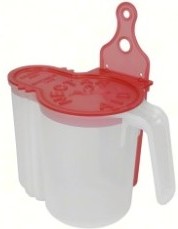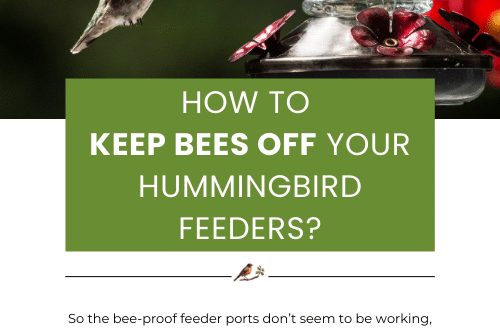-
What’s Really in Your Window Hummingbird Feeder?
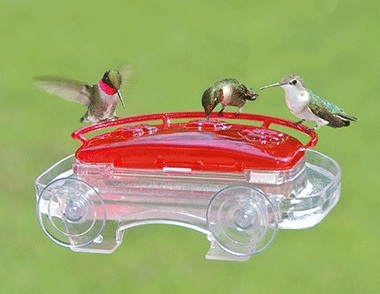 Got a new window hummingbird feeder? Please fill it with the good stuff… read on:
Got a new window hummingbird feeder? Please fill it with the good stuff… read on:One of the biggest myths about feeding hummingbirds is their food needs to be red. That one, along with leaving feeders up in fall will deter the birds from migrating. Neither are true, and the former may actually be hazardous to the tiny sprite’s health. Although no formal studies have been done to prove red dye #40 is not safe for hummingbirds… none have been conducted to say that it’s safe either!
Confirmed in Julie’s Zick’s recent blog post (yeah… she’s an expert) she’s got an interesting view on the subject: http://juliezickefoose.blogspot.com/2015/04/red-alert-for-hummingbirds.html
We’ve been encouraging folks to make their own nectar for years. Not only extremely economical, we believe hummingbirds prefer the home made solution over commercial mixes. 1 cup of sugar to 4 cups of water… it couldn’t be simpler!
Should you have any doubts or fears upon taking this leap from store-bought to home made, check out the new Nectar Aid. It’s the absolute easiest (and foolproof) way to make your own hummingbird or oriole nectar. Measure, mix and store it using one container, even the stirrer’s included!
Check out the demo video below, then watch some tiny sprites in action at this fun window hummingbird feeder!
-
Life After Death for a Tube Bird Feeder
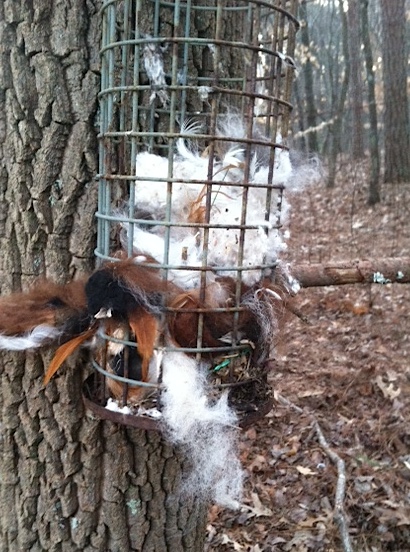 Maybe it’s seen better life and about ready for the trash, but don’t toss that nasty old thing yet! There could still be purpose for an old tube bird feeder, especially if it’s the kind enclosed by a cage.
Maybe it’s seen better life and about ready for the trash, but don’t toss that nasty old thing yet! There could still be purpose for an old tube bird feeder, especially if it’s the kind enclosed by a cage.With bulbs a- blooming and buds a- popping, spring finally takes flight… at least in the southeast. It won’t be long for the rest of the country either, and oh what a welcome site it is! Cabin fever be gone, it’s gardening time, spring cleaning in the yard, and one of the best times for backyard bird action!

When sprucing up, don’t trash the debris either! Consider a small brush pile in one corner of your property, it not only provides shelter but food for birds and others to forage.
So back to the cage thing, it’s absolutely perfect for offering nesting materials. You can help birds feather their nests with a few common materials that may be on hand. Fido or fluffy? Save the hair, chickadees and titmice will line their nests with the soft fluff. Decorative mosses are really popular with Carolina wrens, jays and chickadees will use them too. Lots of folks use cotton yarn scraps, but if they’re dyed… I dunno? Same with dryer lint, it’s
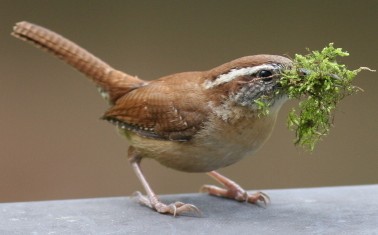 not natural for birds, so we steer clear. Feathers of any kind (sans the dye) also help in construction of soft fluffy digs. Even birds who don’t use houses will benefit from readily available nest materials!
not natural for birds, so we steer clear. Feathers of any kind (sans the dye) also help in construction of soft fluffy digs. Even birds who don’t use houses will benefit from readily available nest materials!Don’t have one of those caged things on hand? Suet baskets are also ideal, and something like these spring feeders are perfectly versatile for year-round use. For fruit in summer, whole peanuts or suet in winter, and of course, nesting materials now. Happy Spring y’all!

-
Warblers be Gone- it’s Time for Hummingbird Feeders!
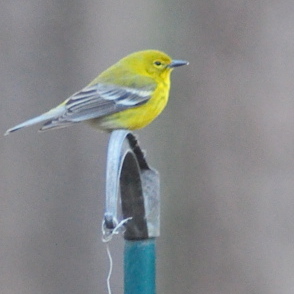 It’s time, farewell and see ya next year! Inundated every winter with pine warblers, it’s good to see them – and good to see them go as their journey North usually coincides with budding trees and blooming bulbs. This event can only mean other migratory birds are on their way, it’s really one of the best and busiest times for backyard birding!
It’s time, farewell and see ya next year! Inundated every winter with pine warblers, it’s good to see them – and good to see them go as their journey North usually coincides with budding trees and blooming bulbs. This event can only mean other migratory birds are on their way, it’s really one of the best and busiest times for backyard birding!Something about the start of nesting season and the return of hummingbirds that awakens the soul, just plain exciting for those who are really into their backyard beaked buddies 🙂
Because migration maps already show ruby-throated hummingbirds in the gulf states, they’re headed back to their favorite breeding grounds. If you saw the sprites at hummingbird feeders last season, there’s a strong likelihood they’ll return. Are you ready?
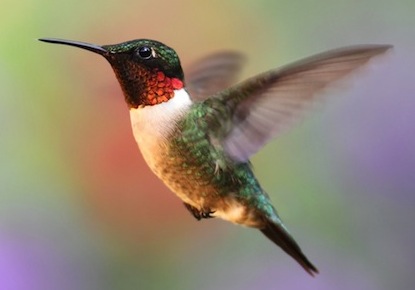
If you’re in the southeast, it’s time to dig out feeders and have them in place… this weekend would be ideal! Even if thoroughly cleaned prior to storage… rinse them well before filling. Since natural food sources are still rather scarce, sugar water can be a tad stronger. If using a commercial mix, use a little less water. If making your own nectar (highly recommended) use a 1:3 ratio. 1 cup plain table sugar to 3 cups of water. Migration is the only time nectar should ever be stronger than the standard 1:4 ratio, the extra calories serve tired and hungry birds well.
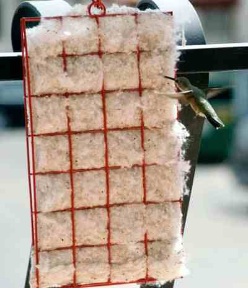 Consider some nesting material to further entice hummingbirds, after all they did come back to breed. The Hummer Helper Nest Kit was developed specifically for hummingbirds (although goldfinches like it too) and has been endorsed by Hummingbird Society president, Ross Hawkins.
Consider some nesting material to further entice hummingbirds, after all they did come back to breed. The Hummer Helper Nest Kit was developed specifically for hummingbirds (although goldfinches like it too) and has been endorsed by Hummingbird Society president, Ross Hawkins.Give tiny sprites a big welcome this year with freshly filled feeders and some nesting materials to help raise their families!
Check out the video and see it in use!

